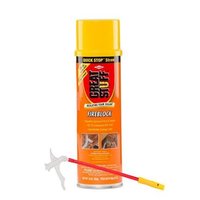I think you are right about velcro. I'll go with metal buttons sewn onto the Nomex with non-combustible Kevlar thread. and loops for them out of the non-combustible Nomex. Lenzip makes flame-resistant zippers, brass teeth on Nomex tape.
The fireproof safe technology was patented in 1860 by Silas Herring. Essentially, it's an outer layer of thick steel, inner layers of plaster and concrete and a thin inner layer of steel. There are still safes made this way by premium manufacturers like Fort Knox and American Security. They cost upwards of 5 grand. If rated by UL, these safes will have at least a TL-15 rating. The cheap gun safes that are abundantly available for a grand or two are technically not even considered safes by UL Laboratories. They are "Residential security containers". They consist of a fairly thin outer layer of steel, sheetrock and carpet inside. They are easy to open with basic hand tools and offer very little fire protection. To add insult to injury, sheetrock facilitates rust even under normal conditionts, it gets even worse when sheetrock is heated.
The safe ratings are, for practical purposes:
RSC - cheap "Residential Security Container" aka "Gun Safe" sold for 1-2 grand.
B-rated - inventory safes. Stores use them to keep expensive merchandise. Cell phone stores keep their inventory in them. Made out of mild steel plate, with no fireproofing. Stores rely on sprinkler systems and fire alarms.
TL-15 - minimum rating for a "real safe". These are often used by Jewelry stores to keep inventory. They can't get their inventory insured unless they keep it in a TL-15 safe.
TL-30 - better version of a "real safe". Often used by banks, government and various businesses.

